Eyelash Viper
- December 15, 2023
- 0 comment
The Eyelash Viper, scientifically known as Bothriechis schlegelii, is a fascinating and visually striking snake species found in Central and South America. Renowned for its distinctive appearance, this venomous pit viper possesses a remarkable set of scales above its eyes that resemble long, feathery eyelashes—hence its common name.

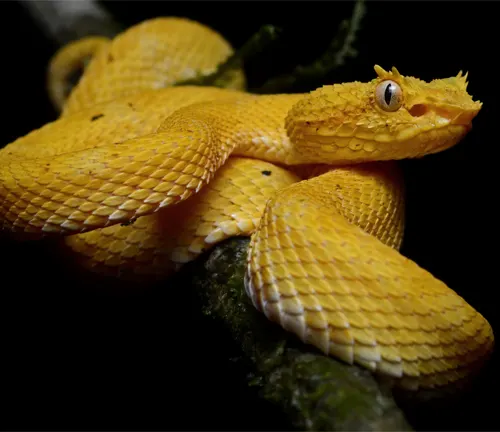
These “eyelashes” serve both a functional and deceptive purpose, helping to break up the snake’s outline and providing a degree of camouflage in the lush, tropical environments it inhabits. Typically measuring between 50 to 80 centimeters in length, the Eyelash Viper exhibits a vibrant color palette, including shades of green, yellow, and red, further enhancing its allure.
Despite its diminutive size, this snake is equipped with potent venom, primarily used for subduing its prey, which consists mainly of small mammals, birds, and amphibians. While encounters with humans are relatively rare, the Eyelash Viper’s alluring appearance serves as a reminder of the rich biodiversity found in the rain forests of Central and South America.
| Characteristic | Details |
|---|---|
| Scientific Name | Bothriechis schlegelii |
| Common Name | Eyelash Viper |
| Length | 50 to 80 centimeters |
| Habitat | Central and South American rainforests |
| Venom | Venomous pit viper with potent venom |
| Coloration | Vibrant colors, including green, yellow, red |
| Unique Feature | Eyelash-like scales above the eyes |
| Diet | Small mammals, birds, amphibians |
| Behavior | Arboreal (tree-dwelling), ambush predator |
| Threat Level | Venomous, but generally not considered a high threat to humans |
| Conservation Status | Varied, some populations may face threats due to habitat loss |
Botanical Beauty of the Eyelash Viper
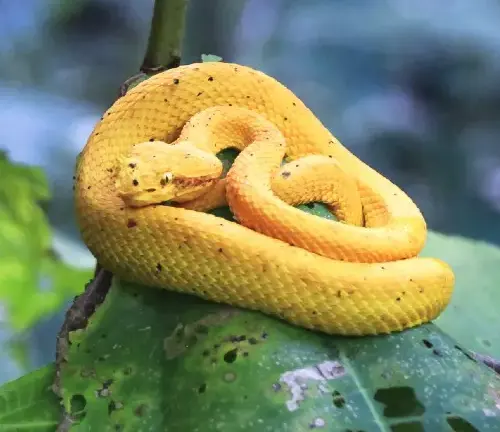
In the heart of Central and South American rain forests resides a captivating serpent, the Eyelash Viper (Bothriechis schlegelii). Beyond its potentially lethal venom, this snake is renowned for its botanical allure. The striking colour palette, including vibrant greens, yellows, and reds, seamlessly blends with the lush surroundings. However, what truly sets it apart is the exquisite detail of its scales, resembling feathery eyelashes above its eyes. This botanical beauty has become an emblem of the intricate diversity found in the tropical ecosystems it calls home.
Venomous or Not Venomous?
The Eyelash Viper, with its mesmerising appearance, often raises the question: Is it a danger to humans? Indeed, it is a venomous pit viper, equipped with potent venom. Despite its venomous nature, encounters with humans are infrequent. The snake relies on its cryptic coloration and ambush tactics, emphasising the importance of respecting its natural habitat and understanding the delicate balance it maintains within the ecosystem.
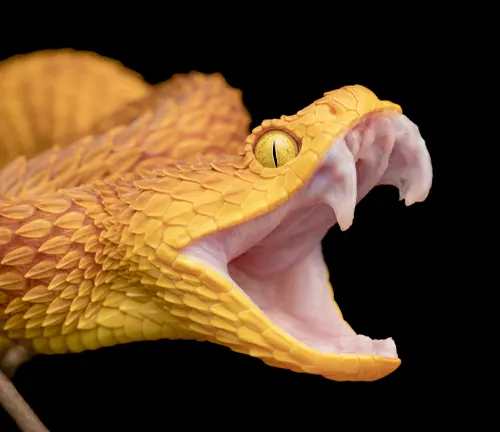
Ecological Importance
Beyond its captivating exterior, the Eyelash Viper plays a crucial role in the intricate web of life in rain forests. As an apex predator, it helps control the population of small mammals, birds, and amphibians, contributing to the balance of the ecosystem. Its presence underscores the interconnections of species and highlights the importance of preserving biodiversity in these vital habitats.
Habitat and Behaviour
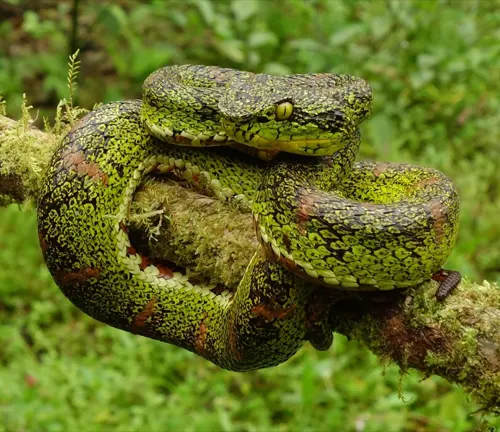
Adapted to life in the trees, the Eyelash Viper exhibits arboreal behaviour, skill fully navigating the dense vegetation of its rain forest home. This snake is a master of camouflage, utilising its vibrant colours and unique scales to blend seamlessly into its surroundings. Its arboreal lifestyle emphasises the significance of preserving the vertical dimension of rain forest ecosystems.
Art and Culture
The Eyelash Viper has not only captured the attention of scientists and nature enthusiasts but has also left its mark on art and culture. Its distinctive appearance has inspired indigenous myths and artwork, becoming a symbol of both danger and beauty. This snake’s cultural significance highlights the profound impact that wildlife can have on human creativity and storytelling.
Survival
Survival in the challenging rain forest environment requires a suite of adaptations, and the Eyelash Viper has evolved to thrive in its niche. From its venomous bite to its cryptic coloration and arboreal prowess, each aspect of this serpent’s biology contributes to its survival. Understanding these adaptations sheds light on the delicate balance that exists within the complex ecosystems it calls home.
Conservation
As with many species dwelling in rain forests, the Eyelash Viper faces threats from habitat loss and human encroachment. Conservation efforts are essential to ensure the survival of this mesmerising serpent and the biodiversity it represents. Preserving its habitat is not only a matter of protecting a single species but also safeguarding the health and resilience of the entire ecosystem.
Common Food
The Eyelash Viper sustains itself through a diet that includes small mammals, birds, and amphibians. This dietary preference reflects its role as an apex predator, influencing the population dynamics of its prey and contributing to the overall ecological balance of its habitat.

Benefits
While the Eyelash Viper’s venom poses a potential threat, it also serves as a natural means of controlling the population of its prey. This regulatory role helps maintain the health of the ecosystem by preventing overpopulation of certain species. Understanding and appreciating the benefits of this serpent contribute to a more holistic perspective on its role in the intricate web of life in the rain forest.
Different Species
Bothriechis aurifer
Known as the Yellow-blotched Palm-Pit viper, this species is found in Central America, including regions of Honduras and Nicaragua. It displays a variation of colours, often with yellow or gold blotches.
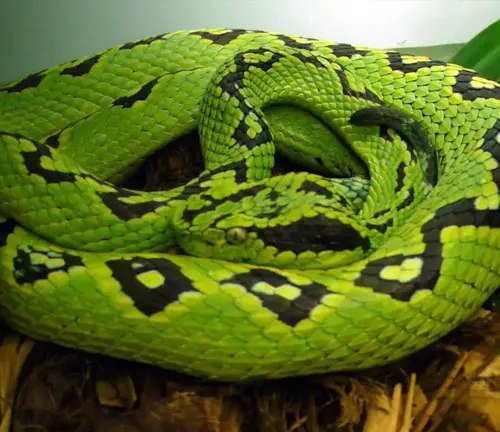
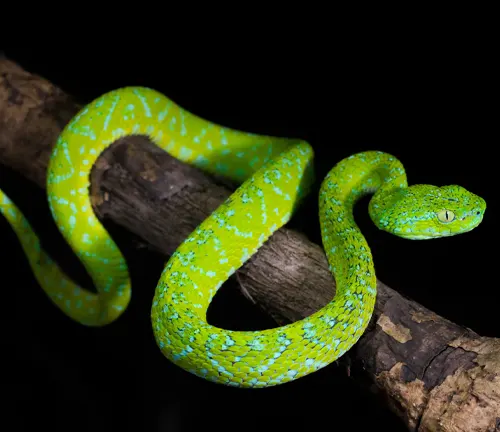
Bothriechis bicolor
Also called the Side-striped Palm-Pitviper, this species inhabits Central America, particularly in Costa Rica and Panama. Its coloration includes a combination of green and yellow, and it is recognized for the stripe along its flanks.
Bothriechis lateralis
The Side-striped Palm-Pit viper is native to South America, found in countries such as Colombia, Ecuador, and Peru. Similar to B. biologic, it has distinctive side stripes and exhibits a range of colours, from green to yellow.

Frequently Asked Questions (FAQs)
- What is the Eyelash Viper?
The Eyelash Viper (Bothriechis schlegelii) is a venomous pit viper snake found in Central and South American rain forests. It is known for its vibrant colors and distinctive scales resembling feathery eyelashes. - Is the Eyelash Viper dangerous to humans?
Yes, the Eyelash Viper is venomous, but encounters with humans are rare. It relies on camouflage and ambush tactics, and bites are generally a result of provocation. - What is the purpose of the “eyelashes” on the Eyelash Viper?
The eyelash-like scales above the snake’s eyes serve a dual purpose. They break up its outline, providing camouflage, and may also play a role in attracting prey or deterring predators. - Where does the Eyelash Viper live?
The Eyelash Viper inhabits the rain forests of Central and South America, favouring arboreal (tree-dwelling) environments. - What is its diet?
The Eyelash Viper preys on small mammals, birds, and amphibians. It is an ambush predator that waits for its prey to come within striking range. - Are there different species of Eyelash Viper?
While “Eyelash Viper” commonly refers to Bothriechis schlegelii, there are other species within the Bothriechis genus, each with its own unique characteristics. - How can I differentiate between different species of Eyelash Vipers?
Differentiating between species may involve observing specific colour patterns, scales, or geographic locations. Consulting a field guide or expert is recommended for accurate identification. - Are Eyelash Vipers kept as pets?
Due to their venomous nature and specialised habitat requirements, Eyelash Vipers are not recommended as pets. Keeping them without proper expertise and facilities can be dangerous and is often illegal. - What is the cultural significance of the Eyelash Viper?
The snake has cultural significance in indigenous myths and artwork, often symbolising danger and beauty. It has inspired various narratives in local cultures. - Are Eyelash Vipers endangered?
The conservation status of Eyelash Vipers varies, with some populations facing threats from habitat loss. Conservation efforts are crucial to ensuring their survival and the preservation of their ecosystems.


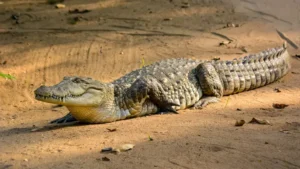


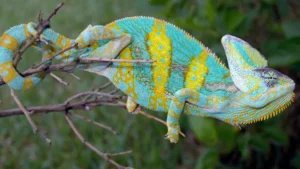
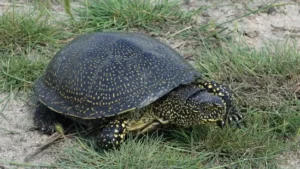

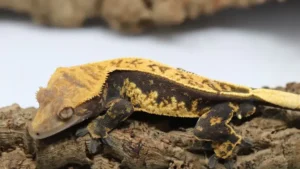

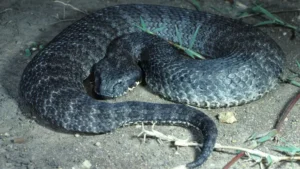
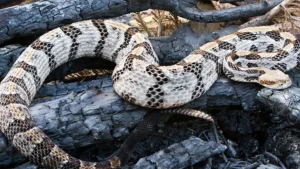


Leave your comment